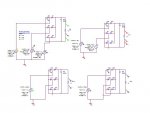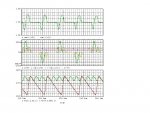No, I'm not saying that at all.You're saying it's probably not a lot different... then you're saying it may very well be different.
It's simple physics If you put 10.5kW 3Ø in and you 10kW out, the process has a 95% efficiency (i.e. 5% loss). Then everyone (but Jraef) is saying it'll likely take significantly more 1Ø power in to get the same 10kW 3Ø power out. Logic dictates a lesser efficiency (greater loss). How can this be "not a lot different"?
In both cases, the DC current conducts through two diodes at any one time. There's just more of them taking part when it's three phase.
The issue is how hard you can push the input rectifier when not using all of its capacity. The efficiency is a bit of a red herring.



